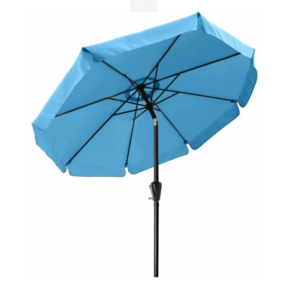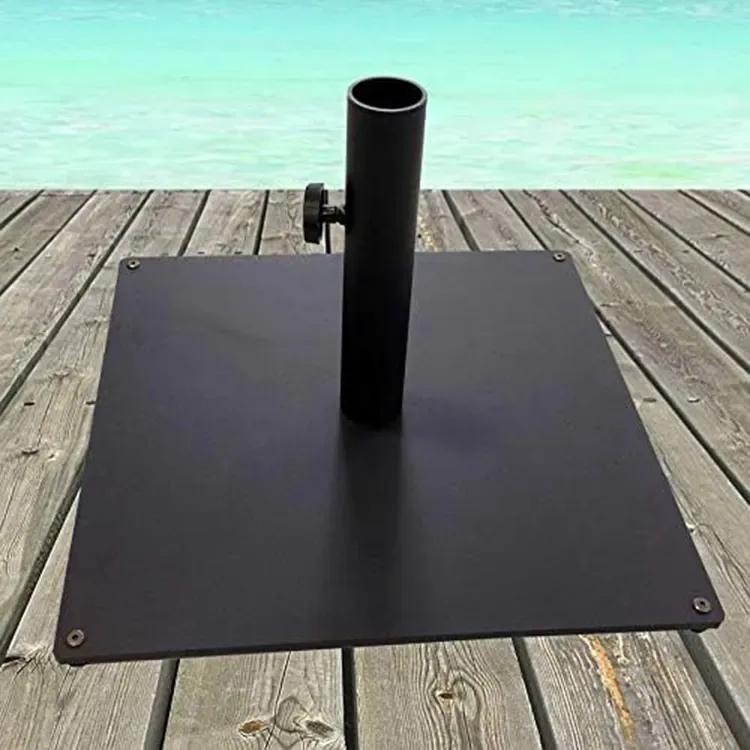
Choosing the right base weight for your cantilever umbrella is crucial for ensuring stability and safety, especially in windy conditions. This guide will explore the factors that influence the weight of the base you need, the different types of bases available, and how to determine the appropriate weight for your specific umbrella.
Cantilever umbrellas, also known as offset umbrellas, have an arm that extends from a vertical pole, allowing the canopy to provide shade without a central support. This design makes them popular for outdoor spaces, including patios, gardens, and pool areas. However, because the weight is distributed off-center, selecting the right base weight is essential to prevent tipping or falling.
Several factors determine how heavy a base you’ll need for your cantilever umbrella:
The size of the umbrella significantly impacts the required base weight. Larger umbrellas with wider canopies require heavier bases to remain stable. A general guideline is that the base should weigh approximately 10% of the umbrella’s overall weight.
| Umbrella Size | Recommended Base Weight |
|---|---|
| 8-9 feet | 50-80 lbs |
| 10-11 feet | 80-100 lbs |
| 11-12 feet | 100-150 lbs |
| 12+ feet | 150-200 lbs |
If you live in an area prone to high winds, you may need a heavier base to counteract the additional force on the umbrella. Wind can create lift on the umbrella, so selecting a base that exceeds the recommended weight by 10-20% is advisable in windy regions.
The type of base you choose also affects how much weight is required. Here are some common base types:
| Base Type | Weight Consideration |
|---|---|
| Concrete Base | Usually heavy and stable; ideal for permanent setups. |
| Weighted Base | Can be filled with water or sand; provides adjustable weight. |
| Cross Base | Requires additional weights (e.g., paving stones) to ensure stability. |
| Mobile Base | Lightweight with wheels; should be weighted down for stability. |
When selecting a base weight, consider the following:
Always refer to the manufacturer’s specifications for your specific cantilever umbrella. They often provide guidelines for the appropriate base weight to ensure safety and stability.
For temporary setups (such as seasonal use), a lighter base may suffice, especially if you can take it indoors during strong winds. For permanent installations, heavier bases or even bolting the umbrella to a solid surface (like a deck or patio) is recommended.
Consider your comfort level. If you are in an area with unpredictable weather, opting for a heavier base can give you peace of mind.
Once you have selected the appropriate base weight, securing it properly is crucial for the safety and longevity of your umbrella. Here are some tips:
Choosing the right base weight for a cantilever umbrella is vital for ensuring safety and stability. Factors such as umbrella size, wind conditions, and base type play a significant role in determining the appropriate weight. Always consult manufacturer recommendations and consider your specific environment when selecting a base. By ensuring you have a properly weighted and secured base, you can enjoy the benefits of your cantilever umbrella without worrying about it tipping over.
| Umbrella Size | Recommended Base Weight | Notes |
|---|---|---|
| 8-9 feet | 50-80 lbs | Ideal for moderate conditions |
| 10-11 feet | 80-100 lbs | Suitable for average outdoor use |
| 11-12 feet | 100-150 lbs | Required for larger setups |
| 12+ feet | 150-200 lbs | Best for heavy-duty, permanent use |
By following these guidelines, you can ensure that your cantilever umbrella is well-supported, allowing you to enjoy shade and comfort in your outdoor space.